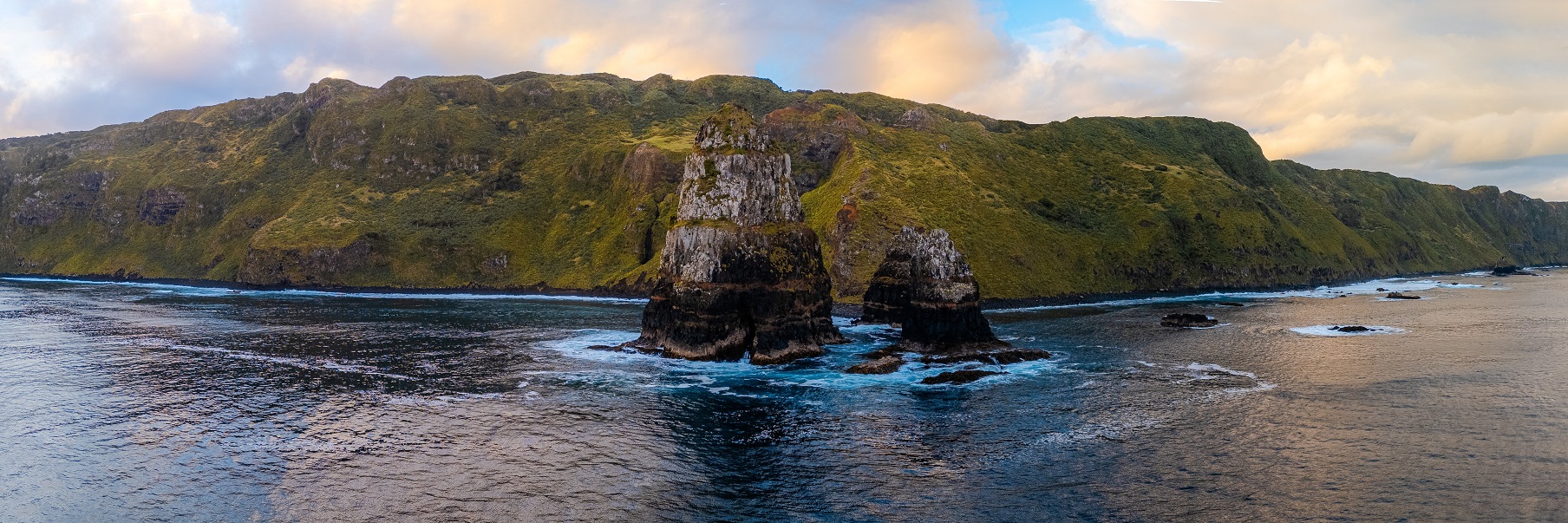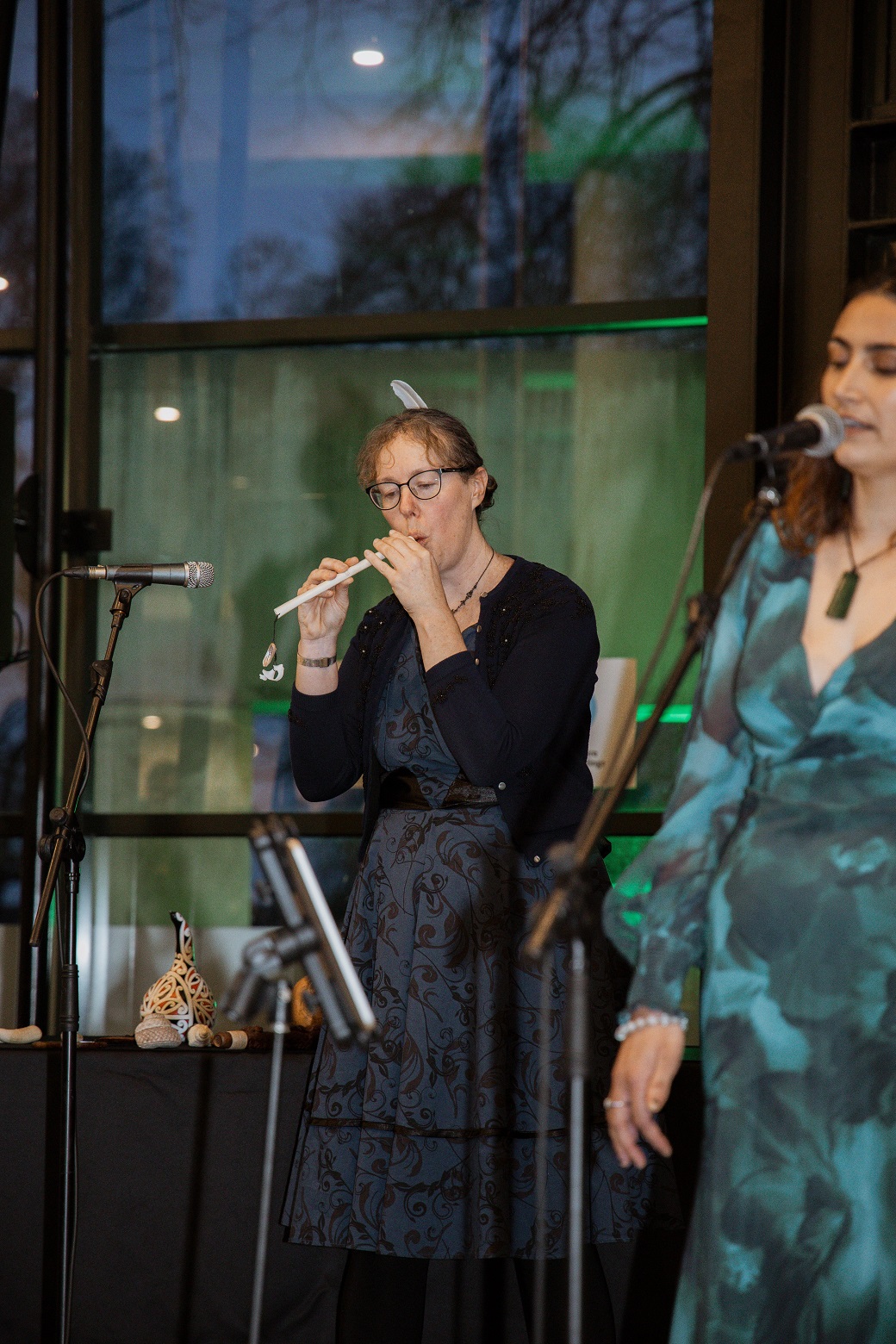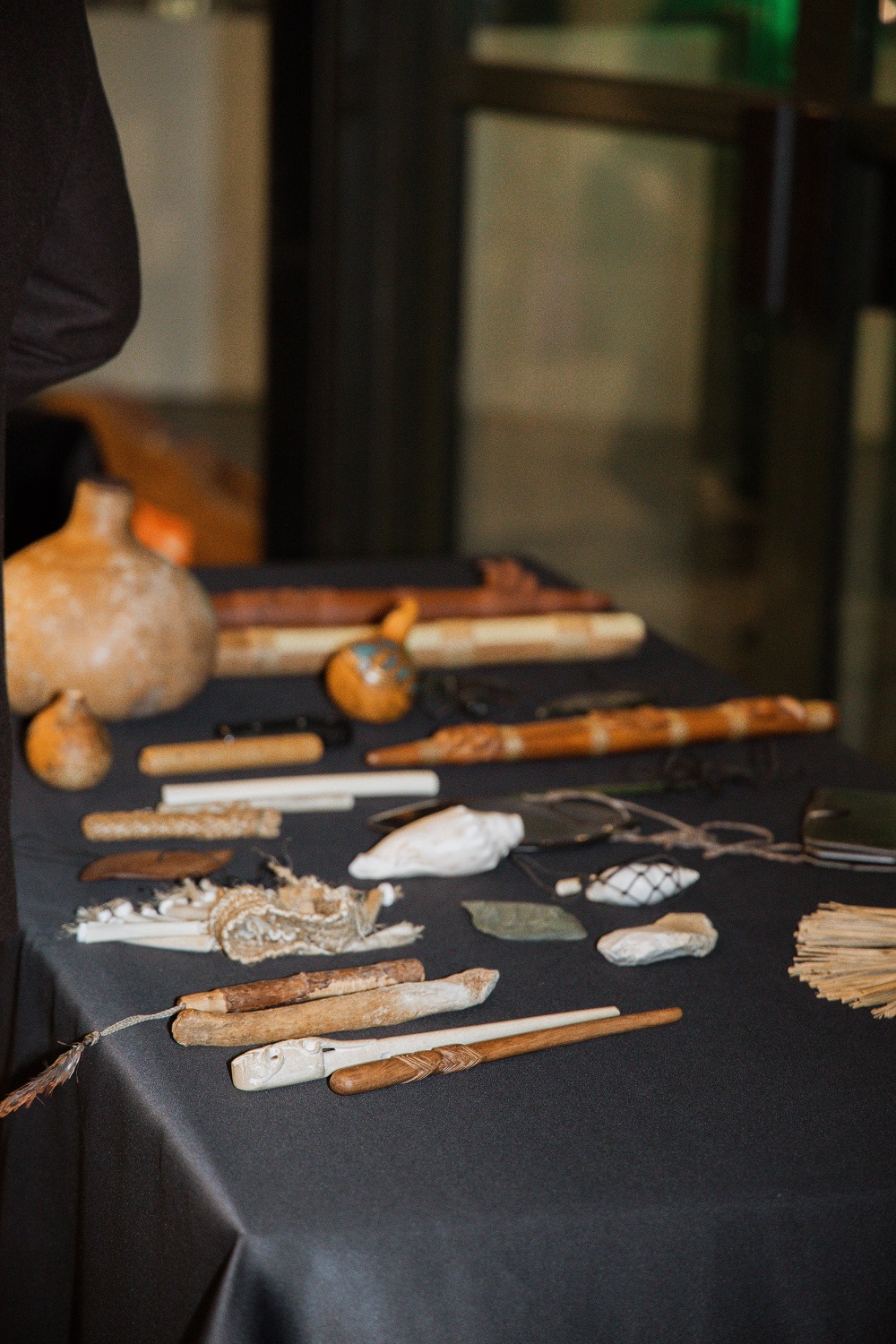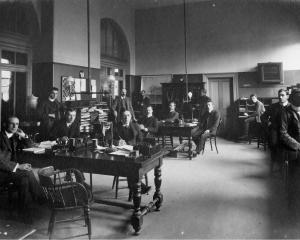
There is something undeniably meditative about the rhythm of the ocean lapping at the shore. Closing my eyes, I focus on the warmth of the northern wind as it shifts into a bracing, energising southerly. I can even smell the sharp ocean air. I feel grounded on a beach, but open my eyes to find myself in the Beautiful Science Gallery at Tūhura Otago Museum.
Right now, Ōtepoti Dunedin is home to an extraordinary doorway through which one can cross the ocean to Rēkohu (the Chatham Islands). The "Hou Rongo — Moriori | Music | Manawa" exhibition at Tūhura offers visitors a glimpse into the physical environment of the island, as well as the Moriori people, who are waina-pono (the original people of the island).
About 1000 years ago, Ta imi Moriori (Moriori people) arrived on the archipelago from eastern polynesia. They settled permanently on Rēkohu and Rangihaute (neighbouring Pitt Island) rather than mainland Aotearoa — and live their still.
"If you look at our coastlines, it is beautiful in its serene calm and untamed fury," Hokotehi Moriori Trust chief executive Ricki Hapi says.
To begin to understand the story of the Moriori people, it is important to understand just how extreme Rēkohu is. While it is not possible to tame and contain the unique, raw wilderness of the island, the "Hou Rongo" exhibition endeavours to paint a portrait to contextualise the resilience of Moriori and their ancestors.
There is a beautiful tension in the exhibition: the contrast between a serene feeling of calm and an overwhelming experience of power. Images of the crashing ocean adorn the walls as a life-sized faux albatross casts an intimidating shadow. Deep whale songs echo around the room. Despite the power, it feels peaceful and welcoming. The exhibition is not only a microcosmic glimpse into Moriori culture, but a microcosmic glimpse into life on the islands.
The tension between calm and power sounds even more potent on Rēkohu.
"The resolve and strength of our people is reflected in our henu (land), and that raw, rough nature makes powerful people," Hapi says.
The exhibition is not a full recounting of who the Moriori are.
"It is however an introduction. My hope for the exhibition is that it will educate and encourage people to seek the truth about who we are as Moriori."
One of the myths surrounding Moriori people is that the culture and Ta imi Moriori are "extinct".
In 1933, New Zealand papers formally announced Moriori extinct after the death of Moriori man Tommy Solomon. For a long time, the Ministry of Education’s curriculum reinforced this harmful myth, one many people still believe today.
Having the "Hou Rongo" exhibition on the mainland, in Dunedin, could allow mainland Moriori a chance to connect with a heritage they may not even know exists. Hapi is hopeful the exhibition will also instil pride and understanding.

"I want to see our communities being built where ta rē Moriori has been passed from parent to child, and I would love to see this prosper in the years to come.
"Obviously, we want the exhibition to come home to Rēkohu, but if there are opportunities to share these experiences with our people across the mainland, we would be open to those conversations."
An important aspect of the exhibition has been creating a space that immerses visitors in the culture and mock environment of Te imi Moriori and the islands.
Dr Gianna Savoie is the team leader on the wider "Hou Rongo" project, which has culminated in the exhibition. The project has been running for four years and two years ago it received a Ministry of Business, Innovation, and Employment Smart Ideas grant.
She has employed her wide background in science, art, culture and communication to give the exhibition an interdisciplinary nature.
"The idea is that you enter the Beautiful Science Gallery and you are transported to Rēkohu.
"It’s really great for diverse learning styles because it is so sensorial. It’s not one size fits all, and I think that’s a really strong aspect of this exhibition."
Savoie shares Hapi’s aspirations for the exhibition, explaining that her primary hope is that people will "walk away from [the exhibition] feeling like they have a deeper understanding of the culture, not through reading but through experiencing".
"Hou Rongo" is about celebrating who Moriori are today and really embracing all the vibrancy and creativity," she says.
"People need to understand that the culture is no relic from the past."
The exhibition itself was curated by University of Otago science communication professor Nancy Longnecker.
"I’ve taught for about 20 years and curated dozens of exhibitions, but this exhibition is one that I’m most excited about," Prof Longnecker says.
Her background in science communications has helped to drive the interdisciplinary, educational nature of the exhibition, supporting the idea of learning through immersion and experience.

"A lot of times you can’t touch things in museums, but there will be lots of things in the exhibition that you can touch. Hopefully, it will be a really impactful experience."
One of the stand-out tactile elements of the exhibition is its inclusion of functional replicas of miheki oro, the modern name for albatross-bone flutes crafted hundreds of years ago by Te imi Moriori. Only two of these flutes are known to exist today, each carefully guarded in museum collections.
Since these two originals cannot be played, University of Otago ethnomusicologist Assoc Prof Jennifer Cattermole decided to try to produce a range of replicas, to bring back the music of the miheki oro.
She has worked with her colleagues at the University of Otago to create precise 3-D printed replicas of the two miheki oro in museum collections. These prints are on display and can be handled by visitors to the "Hou Rongo" exhibition.
Assoc Prof Cattermole is hosting an interactive workshop for visitors to learn to play miheki oro on October 4.
Today the exhibition hosts a screening of the documentary Reviving Moriori Culture, directed by Brady Clarke. It will be accompanied by a talk by project lead Dr Savoie, who was also executive producer on the documentary.
"Strength, resolve, resilience — that’s what being Moriori means to me," Hapi says.
"When I look at Rēkohu and those who live there, I experience a feeling of pride and strength and that is something that should be shared with others who are Moriori.
"We can’t change history," explains one of the subjects in Clarke’s compelling documentary.
"But we can start shaping the future, and that’s the direction I prefer to look."
The exhibition
• "Hou Rongo — Moriori | Music | Manawa" is at Tūhura Otago Museum until October 27.
• Documentary screening, Reviving Moriori Culture, and talk by Dr Gianna Savoie, today 3pm.












